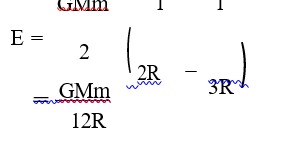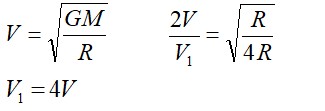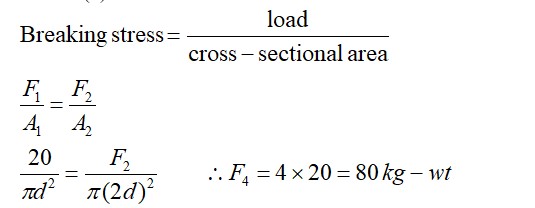In free space, two particles of mass m each are initially both at rest at a distance a from each other. They start moving towards each other due to their mutual gravitational attraction. The time after which the distance between them has reduced to a/2 is
In free space, two particles of mass m each are initially both at rest at a distance a from each other. They start moving towards each other due to their mutual gravitational attraction. The time after which the distance between them has reduced to a/2 is
Option 1 -
( (π+2) / 4√2 ) (a³/Gm)¹/²
Option 2 -
( (π-2) / 4√2 ) (a³/Gm)¹/²
Option 3 -
( (π+2) / 8 ) (a³/Gm)¹/²
Option 4 -
( (π-2) / 8 ) (a³/Gm)¹/²
-
1 Answer
-
Correct Option - 3
Detailed Solution:Let the origin be at the CM of the particles, let the initial positions of the particles be x = a/2 and x = -a/2 and let the instantaneous positions of the particles be x = r and x = -r
Let the instantaneous velocity of each particle be v
Let the time after which the distance between the particles has reduced to a/2 be T
Then, for the particle that was initially at x = -a/2,
(Gm²/ (2r)²) = -m (vdv/dr) ⇒ (Gm/r²) = - (4vdv/dr) ⇒ -4∫vdv = Gm∫ (dr/r²)
[v is negative because the velocity is towards the –X direction]
dr/dt = -√ (Gm/2) (1/r - 2/a)¹? ²
⇒ ∫ (a/2)^ (a/4) (r/√...more
Similar Questions for you
Due to Interference, soap bubble appears coloured.
Value of 'g' increases at the equator when earth suddenly stops rotating.
Taking an Exam? Selecting a College?
Get authentic answers from experts, students and alumni that you won't find anywhere else
Sign Up on ShikshaOn Shiksha, get access to
- 65k Colleges
- 1.2k Exams
- 679k Reviews
- 1800k Answers



